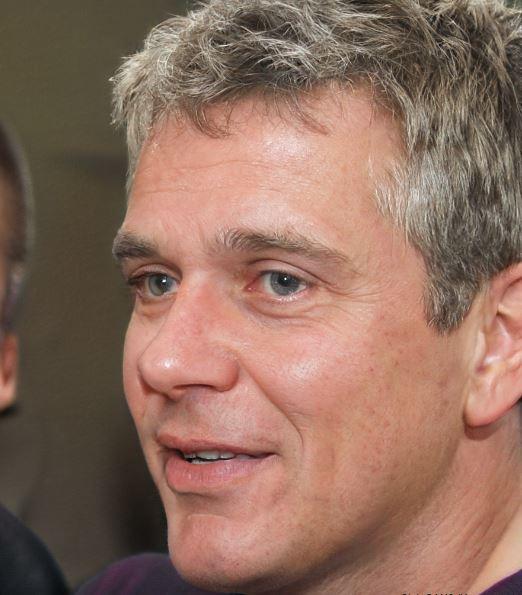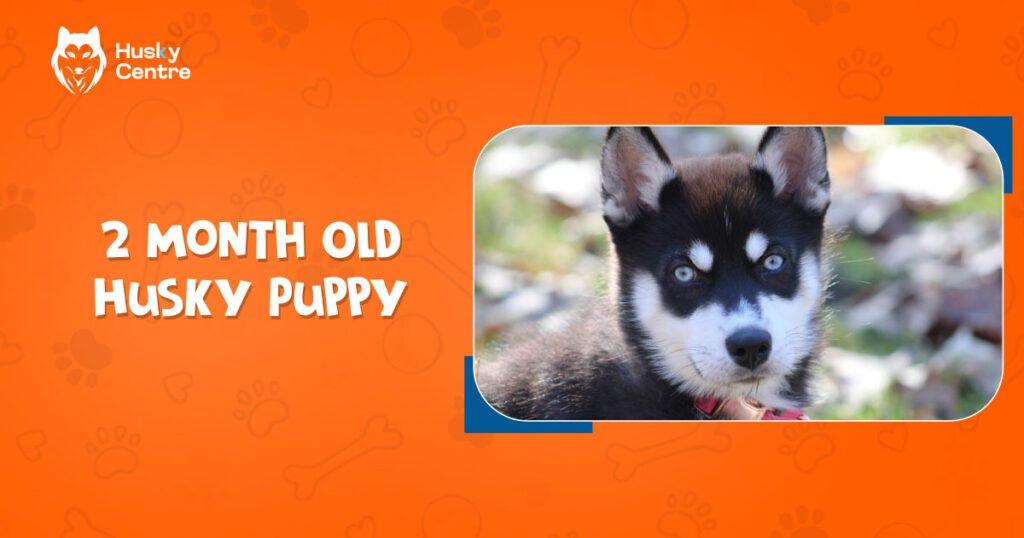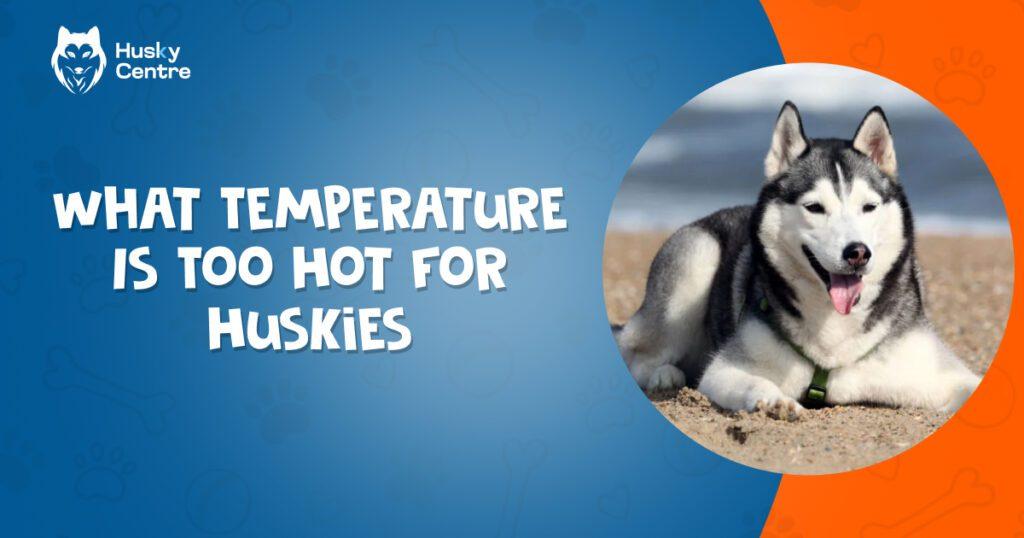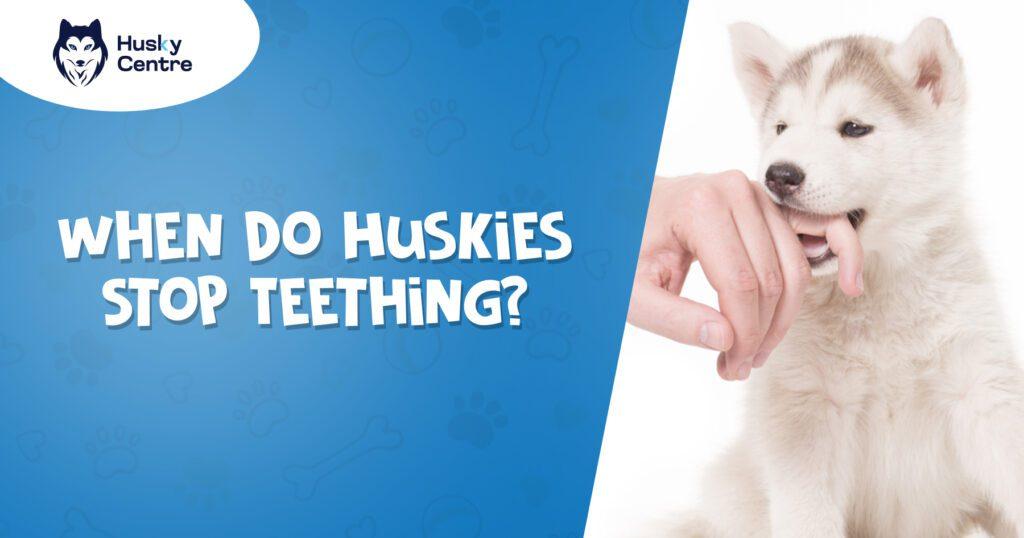A 2-month-old Husky puppy is energetic and needs proper care. Prioritize nutrition, training, and socialization for healthy development.
A 2-month-old Husky puppy is at a critical stage of growth and development. These lively pups require a balanced diet rich in essential nutrients to support their rapid growth. Early training and socialization are crucial to ensure they become well-behaved adult dogs.
Consistent routines help them learn commands and house rules effectively. Regular vet check-ups keep them healthy and up-to-date with vaccinations. Huskies are known for their energy and intelligence, so mental stimulation and physical exercise are vital. Social interactions with other dogs and people help them become friendly and well-adjusted. Proper care during these early months sets the foundation for a happy, healthy life.
Developmental Milestones
At two months old, a Husky puppy experiences significant changes. These developmental milestones include both physical growth and behavioural changes. Understanding these milestones helps ensure your puppy grows into a healthy and well-adjusted dog.
Physical Growth
At two months, a Husky puppy undergoes rapid physical growth. Their weight can range from 10 to 15 pounds, and they gain muscle mass quickly.
- Weight Gain: Husky puppies usually gain about 2 to 3 pounds each week.
- Height Increase: They grow taller, with noticeable changes in their leg length and overall height.
- Coat Development: Their fur becomes denser and softer, preparing for the colder months.
Here is a quick overview of the typical physical growth milestones:
| Age | Weight | Height |
| 8 Weeks | 10-15 lbs | 8-12 inches |
| 10 Weeks | 13-18 lbs | 9-13 inches |
| 12 Weeks | 15-20 lbs | 10-14 inches |
Huskies are known for their distinctive coat. At this stage, the fur starts to thicken. This helps them adapt to colder climates. Their eyes may also change color, usually stabilizing by the end of the third month.
Behavioral Changes
Behaviorally, a two-month-old Husky puppy begins showing curiosity and playfulness. They start interacting more with their environment and humans.
- Social Interaction: Puppies become more social and enjoy playing with other dogs and people.
- Teething: They start teething, which may lead to chewing on various objects.
- Training Readiness: This is the ideal time to begin basic training, such as housebreaking and simple commands.
Here are some key behavioral milestones:
- Increased interaction with their environment.
- Beginning to recognize their name and respond to it.
- Developing a routine for eating and sleeping.
- Exploring and playing more actively.
Husky puppies at this age are highly energetic. They need plenty of playtime and mental stimulation. This helps them develop into well-rounded adults. Consistent training also helps instill good habits early on.
Feeding And Nutrition
Welcoming a 2-month-old Husky puppy into your home is exciting. These adorable furballs need special care, especially in feeding and nutrition.
Ensuring they get the right food and a proper feeding schedule helps them grow healthy and strong.
Puppy Food Requirements
At 2 months old, your Husky puppy requires a balanced diet to support its growth. High-quality puppy food is essential. Look for food rich in proteins, fats, vitamins, and minerals. Here’s what you should focus on:
- Proteins: Essential for muscle development. Choose food with chicken, beef, or fish.
- Fats: Provide energy. Ensure the food has animal fats or fish oils.
- Vitamins and Minerals: Crucial for immune health. Look for food with added vitamins and minerals.
- Fiber: Helps digestion. A small amount of fiber is beneficial.
It’s crucial to avoid foods with artificial preservatives, colors, or flavors. These can be harmful to your puppy. Here’s a simple table for better understanding:
| Nutrient | Importance |
| Proteins | Muscle growth |
| Fats | Energy source |
| Vitamins and Minerals | Immune support |
| Fiber | Digestive health |
Consult your vet to choose the best puppy food. They can recommend brands and specific products tailored to your Husky’s needs.
Feeding Schedule
A consistent feeding schedule is crucial for your 2-month-old Husky puppy. Feeding them at regular intervals helps maintain their energy and supports steady growth. At this age, aim for:
- 3-4 meals per day: Small, frequent meals are easier to digest.
- Consistent times: Feed at the same times each day to establish a routine.
- Portion control: Follow the feeding guidelines on the puppy food package.
Here’s a sample feeding schedule:
| Time | Meal |
| 7:00 AM | Breakfast |
| 12:00 PM | Lunch |
| 5:00 PM | Dinner |
| 9:00 PM | Late Snack |
Ensure fresh water is always available. Hydration is as important as food. Adjust meal sizes based on your puppy’s growth and activity level. Regular vet check-ups can help you tweak the feeding schedule if needed.
House Training And Potty Training
Bringing home a 2-month-old Husky puppy can be an exciting and joyful experience. However, house training and potty training are essential tasks you need to start right away.
Teaching your new furry friend where to do their business can be a challenging but rewarding process. Proper training ensures that your home stays clean, and your puppy learns good habits early on.
Establishing A Routine
Creating a consistent routine is crucial for successful house training. Puppies thrive on routine, and a structured schedule will help your Husky understand when and where to go potty. Here are some steps to establish a routine:
- Take your puppy outside first thing in the morning.
- Feed your puppy at the same times each day.
- Take your puppy outside after meals. This is when they usually need to go.
- Schedule regular potty breaks every 1-2 hours.
- Take your puppy out before bedtime.
Track your puppy’s potty habits to find their natural schedule. Use a table to keep notes:
| Time | Activity | Result |
| 7:00 AM | Wake up & go outside | Pee |
| 8:00 AM | Breakfast | None |
| 8:30 AM | Go outside | Pee |
| 12:00 PM | Lunch | None |
| 12:30 PM | Go outside | Pee & poop |
Stick to this schedule, and your puppy will learn quickly. Reward them with treats and praise every time they go potty outside.
Crate Training Tips
Crate training is an effective way to help with potty training. Dogs naturally avoid soiling their sleeping area, so a crate can be a useful tool. Follow these tips to make crate training successful:
- Choose the right size crate. It should be big enough for your puppy to stand, turn around, and lie down comfortably.
- Introduce the crate positively. Make it a welcoming space with soft bedding and a toy.
- Never use the crate as punishment. Your puppy should see it as a safe and happy place.
- Start with short periods in the crate. Gradually increase the time your puppy spends inside.
- Take your puppy outside immediately after crate time. This reinforces the idea that the crate is not for potty time.
Incorporate crate time into your daily routine. For example: right size crate
| Time | Activity |
| 9:00 AM | Crate time while you work |
| 12:00 PM | Potty break & lunch |
| 1:00 PM | Crate time for a nap |
| 3:00 PM | Potty break |
Be consistent and patient. Crate training takes time, but it pays off in the long run. Your Husky will see the crate as a safe and comfortable place.
Socialization And Interaction
Bringing home a 2-month-old Husky puppy is an exciting experience. These little furballs are full of energy and curiosity. One crucial aspect of their early development is socialization and interaction.
Ensuring your Husky puppy is well-socialized can lead to a happy, well-adjusted dog. This blog section will explore two key areas: bonding with family members and introducing your puppy to other pets.
Bonding With Family Members
Building a strong bond with your 2-month-old Husky puppy is essential. It sets the foundation for a lifetime of trust and companionship. Here are some tips to help you bond with your new furry friend:
- Spend Quality Time: Dedicate time each day to play and interact with your puppy. Use toys and games to engage them.
- Consistent Routine: Establish a daily routine for feeding, playing, and potty breaks. Consistency helps your puppy feel secure.
- Positive Reinforcement: Use treats and praise to reward good behavior. Positive reinforcement encourages your puppy to repeat desired actions.
In addition to the above tips, incorporating some simple activities can also strengthen your bond:
| Activity | Description |
| Training Sessions | Short, fun training sessions help your puppy learn commands and build trust. |
| Walks | Taking short walks around your neighborhood introduces your puppy to new sights and sounds. |
| Cuddling | Spending quiet time cuddling can make your puppy feel loved and safe. |
Remember, patience is key. Your puppy is still learning and adjusting to their new home. Show them love and understanding as they grow.
Introducing To Other Pets
Introducing your 2-month-old Husky puppy to other pets requires careful planning. Proper introductions help prevent conflicts and build positive relationships:
- Controlled Environment: Start introductions in a neutral space to avoid territorial behavior.
- Gradual Introductions: Allow brief, supervised interactions at first. Gradually increase the time they spend together.
- Observe Body Language: Watch for signs of stress or aggression in both your puppy and other pets. Separate them if needed.
Here are some additional tips for a successful introduction:
- Use Leashes: Keep both pets on leashes during initial meetings to maintain control.
- Provide Separate Spaces: Ensure each pet has their own space to retreat to if they feel overwhelmed.
- Supervise Interactions: Always supervise interactions until you are confident they get along well.
Consistency and patience are crucial during this process. With time, your Husky puppy can develop friendly relationships with other pets, creating a harmonious household.
Basic Training And Commands
Training a 2-month-old Husky puppy can be both fun and rewarding. At this age, puppies are highly receptive and eager to learn. Basic training and commands are essential for a well-behaved dog.
Start with simple commands like name recognition, sit, stay, and come. Consistency, patience, and positive reinforcement are key to successful training.
Name Recognition
Teaching your Husky puppy its name is the first step in training. Name recognition helps in getting your puppy’s attention. Follow these steps to teach name recognition:
- Choose a short, distinct name: A name with one or two syllables is ideal.
- Make eye contact: Hold a treat near your face and call your puppy’s name.
- Reward immediately: When your puppy looks at you, give the treat and praise.
Practice this exercise several times a day. Repeat the name often during playtime and feeding. Consistency will help your puppy associate the name with positive experiences. Here’s a simple table to track your puppy’s progress:
| Day | Sessions | Success Rate |
| 1 | 5 | 50% |
| 2 | 5 | 70% |
| 3 | 5 | 90% |
By the end of the week, your puppy should respond to its name consistently.
Sit, Stay, And Come
Sit, stay, and come are foundational commands for your Husky puppy. Start with “sit” as it is the easiest command:
- Hold a treat close to the puppy’s nose.
- Lift the treat upwards: This movement will cause the puppy to sit naturally.
- Say “sit” and reward the puppy with the treat and praise.
Practice “sit” several times a day. Consistency will help your puppy learn faster. Next, move on to “stay”:
- Ask your puppy to sit.
- Show your palm and say “stay”.
- Take a step back: If the puppy stays, reward immediately.
Gradually increase the distance and duration of the “stay” command. Finally, teach “come”:
- Put your puppy on a leash.
- Say “come” while gently pulling the leash towards you.
- Reward and praise when the puppy comes to you.
Practice these commands daily. Use treats and positive reinforcement to encourage good behavior. Your Husky puppy will soon master these basic commands.
Health Care And Vaccinations
Introducing a 2 Month Old Husky Puppy into your home is a joyous experience. To ensure your furry friend stays healthy and happy, health care and vaccinations are crucial. Proper care at this early stage sets the foundation for a lifetime of well-being.
Veterinary Visits
Your 2 Month Old Husky Puppy needs regular veterinary visits to monitor their growth and health. Early check-ups help identify any potential issues and ensure your puppy is developing correctly.
During these visits, the vet will perform a physical examination, checking the puppy’s weight, temperature, and overall condition.
Key elements of these visits include:
- Physical Examination: The vet will check the puppy’s coat, skin, eyes, ears, and mouth.
- Weight Check: Monitoring weight gain is crucial for proper growth.
- Parasite Control: The vet will check for fleas, ticks, and worms, and provide treatments if necessary.
- Diet and Nutrition Advice: Guidance on the best diet for your growing puppy.
These visits are essential for early detection of health problems and ensuring your puppy receives the necessary treatments. Below is a basic schedule for the first few months:
| Age | Action |
| 8 Weeks | Initial vet visit, first vaccinations, and deworming |
| 10-12 Weeks | Follow-up visit, booster vaccinations, and continued parasite control |
| 14-16 Weeks | Final puppy vaccinations and health check-up |
Vaccination Schedule
Vaccinations are crucial to protect your 2 Month Old Husky Puppy from various diseases. A proper vaccination schedule ensures they build immunity against common puppy illnesses. The first set of vaccinations usually begins at 6-8 weeks old.
The typical vaccination schedule includes:
- 6-8 Weeks: First round of DHPP (Distemper, Hepatitis, Parvovirus, and Parainfluenza).
- 10-12 Weeks: Second round of DHPP and first Leptospirosis vaccine.
- 14-16 Weeks: Third round of DHPP, second Leptospirosis, and Rabies vaccine.
Each vaccine plays a critical role:
- DHPP: Protects against four serious diseases.
- Leptospirosis: Guards against bacterial infections.
- Rabies: Required by law and protects against a fatal virus.
Keeping a vaccination record is essential. Use a table or a chart to track your puppy’s vaccinations:
| Age | Vaccine | Next Due |
| 6-8 Weeks | DHPP | 10-12 Weeks |
| 10-12 Weeks | DHPP, Leptospirosis | 14-16 Weeks |
| 14-16 Weeks | DHPP, Leptospirosis, Rabies | Annual |
Proper vaccination helps your Husky puppy grow into a healthy and strong dog. Regular vet visits and sticking to the vaccination schedule are vital steps in ensuring your puppy’s health.
Exercise And Playtime
Owning a 2-month-old Husky puppy is an exciting adventure. Their high energy and playful nature require regular exercise and playtime. This keeps them healthy and happy.
Understanding their exercise needs is crucial for their development. Let’s dive into how you can ensure your little furball gets enough activity.
Play Sessions
Play sessions are essential for a 2-month-old Husky puppy. These sessions help them burn off excess energy and bond with you. Short, frequent playtimes are better than long, tiring sessions.
Aim for 10-15 minutes of play every couple of hours. This keeps your puppy engaged and happy.
Here are some fun play ideas:
- Tug-of-War: Use a soft toy to play tug-of-war. This builds strength and coordination.
- Fetch: Throw a small, soft ball and encourage your puppy to bring it back.
- Hide and Seek: Hide treats around the house and let your puppy find them. This stimulates their mind.
- Interactive Toys: Toys that make noise or move can keep your puppy entertained.
Playing with your puppy isn’t just fun. It also helps them learn social skills. Always supervise playtime to ensure your puppy stays safe.
Exercise Needs
Understanding a 2-month-old Husky puppy’s exercise needs is important. Huskies are active dogs with high energy levels. At this age, they don’t need intense exercise but they do need regular activity.
Daily Routine:
| Time of Day | Activity |
| Morning | Short walk or play session |
| Afternoon | Interactive toy time |
| Evening | Play session or light exercise |
Here are some tips to ensure your puppy gets enough exercise:
- Short Walks: Take your puppy on short, gentle walks. Avoid long walks to prevent overexertion.
- Supervised Yard Time: Let your puppy explore the yard under supervision. This allows them to run and play freely.
- Socialization: Arrange playdates with other vaccinated puppies. This helps with their social skills and provides exercise.
- Mental Stimulation: Use puzzle toys and training sessions to keep their mind active.
Remember, a tired puppy is a well-behaved puppy. Balancing physical and mental exercise ensures your Husky puppy grows into a healthy, happy dog.
Sleep Patterns And Rest
At 2 months old, a Husky puppy is a bundle of energy and curiosity. But, just like human babies, these little furballs need plenty of sleep to grow strong and healthy.
Understanding their sleep patterns and ensuring they get enough rest is crucial for their development. Let’s dive into the sleep requirements and how to create a comfortable sleeping area for your Husky puppy.
Sleep Requirements
A 2-month-old Husky puppy needs ample sleep to support their rapid growth. On average, they require about 18-20 hours of sleep per day.
This may seem like a lot, but this sleep is essential for their brain development, immune system, and overall health.
Here are some key points to keep in mind:
- Daytime Naps: Your puppy will take several naps throughout the day. These naps can range from 30 minutes to a couple of hours.
- Nighttime Sleep: At night, your puppy should get a longer stretch of uninterrupted sleep. Typically, they will sleep for around 6-8 hours.
- Wakeful Periods: In between naps, your puppy will have bursts of energy. This is the time to play, socialize, and train.
Ensuring your puppy gets enough sleep can help prevent behavioral issues and promote a happy, healthy pet.
| Time of Day | Activity | Duration |
| Morning | Nap | 1-2 hours |
| Afternoon | Nap | 1-2 hours |
| Evening | Nap | 1-2 hours |
| Night | Sleep | 6-8 hours |
Creating A Comfortable Sleeping Area
To ensure your Husky puppy gets the best rest, creating a comfortable sleeping area is key. Here are some tips to set up the perfect sleep space:
- Choose a Quiet Spot: Place their bed in a quiet, low-traffic area of your home. This helps minimize disturbances and promotes better sleep.
- Comfortable Bed: Invest in a soft, supportive bed that fits your puppy’s size. A good bed can make a huge difference in their quality of sleep.
- Temperature Control: Huskies have thick fur, so ensure the sleeping area is cool and well-ventilated. Avoid placing the bed near heaters or in direct sunlight.
- Toys and Blankets: Include a few soft toys and a blanket with your scent. This provides comfort and a sense of security for your puppy.
Maintaining a consistent sleep routine can also help your puppy settle down more easily. Try to keep a regular schedule for naps and nighttime sleep. This consistency will help your puppy understand when it’s time to rest.
By following these tips, you’ll create a cozy and safe sleeping area that supports your Husky puppy’s well-being and growth.
Grooming And Care
Welcoming a 2-month-old Husky puppy into your home is an exciting experience. This adorable, fluffy bundle of joy requires special attention, especially in grooming and care.
Proper grooming helps keep their coat healthy and can prevent various health issues. Let’s explore how you can take care of your little Husky’s grooming needs.
Brushing And Coat Care
Huskies have a thick double coat that needs regular maintenance. At two months old, your Husky puppy is already starting to develop this coat. Brushing is essential to keep their fur smooth and free from tangles.
Follow these steps for effective brushing:
- Use the right brush: A slicker brush works well for Huskies. Choose one with soft bristles for your young puppy.
- Brush regularly: Brush your puppy’s coat at least three times a week. This keeps their fur clean and reduces shedding.
- Be gentle: Your puppy’s skin is sensitive. Brush gently to avoid hurting them.
Brushing also helps to check for any skin issues like fleas or rashes. Make sure to inspect their coat thoroughly during each grooming session.
Here’s a quick look at the benefits of regular brushing:
| Benefit | Description |
| Reduces Shedding | Regular brushing helps control the amount of fur that sheds. |
| Prevents Matting | Brushing removes tangles and prevents matting of the fur. |
| Improves Circulation | Brushing stimulates blood flow to the skin, promoting a healthy coat. |
Nail Trimming
Keeping your Husky puppy’s nails trimmed is crucial for their comfort and health. Long nails can cause pain and affect their ability to walk properly.
Follow these steps for safe nail trimming:
- Use proper tools: Get a pair of puppy nail clippers or a nail grinder.
- Stay calm: Make sure your puppy is relaxed before starting. You can use treats to keep them calm.
- Trim carefully: Only trim the tip of the nail. Avoid cutting into the quick, which can cause bleeding and pain.
Nail trimming should be done every 1-2 weeks. This frequency helps keep the nails at a manageable length and prevents them from getting too long.
Here are some tips to make nail trimming easier:
- Start early: Begin trimming your puppy’s nails while they are young to get them used to the process.
- Use positive reinforcement: Reward your puppy with treats and praise after each successful trim.
- Trim a little at a time: If your puppy is anxious, trim just one or two nails per session.
Regular nail trimming ensures your Husky puppy stays comfortable and healthy. It also helps prevent any potential injuries related to long nails.
Frequently Asked Questions
How Big Is A 2-month-old Husky Puppy?
A 2-month-old husky puppy typically weighs between 10 to 15 pounds and stands about 10 to 12 inches tall.
How Often Should You Feed A 2-month-old Husky?
Feed a 2-month-old husky three to four times daily. Ensure meals are balanced and appropriate for puppies.
How To Train A 2-month-old Husky?
Start with crate training and establish a routine. Use positive reinforcement for good behavior. Introduce basic commands like sit and stay. Socialize your husky with people and pets. Provide chew toys for teething and ensure regular vet check-ups.
Can I Bathe My 2-month-old Husky Puppy?
Yes, you can bathe your 2-month-old husky puppy. Use a mild puppy shampoo and ensure the water is lukewarm. Avoid getting water in their ears and eyes. Dry them thoroughly to prevent chills.
Conclusion
Caring for a 2-month-old Husky puppy is rewarding and challenging. Ensure proper nutrition, training, and socialization. Create a loving environment to help your puppy thrive. Enjoy the playful moments and watch your Husky grow into a loyal companion. With patience and care, you’ll build a strong bond that lasts a lifetime.


Meet Jarred, the heart and soul behind HukyCentre. With a deep affection for furry friends, he pours his passion into every word he writes. His genuine love for dogs shines through in his engaging and informative content. As a dedicated dog enthusiast, Jarred’s goal is to share valuable insights and tips that resonate with fellow dog lovers. Join Jarred on the journey as he celebrates the joy and companionship that dogs bring into our lives.



